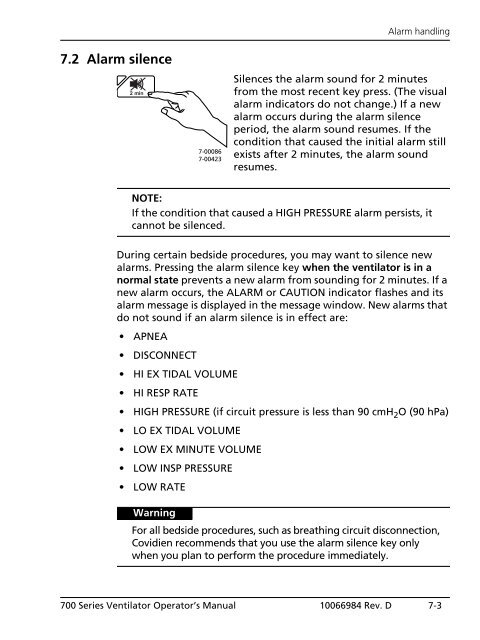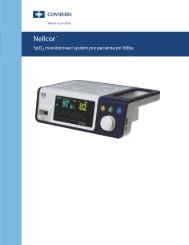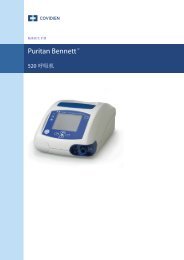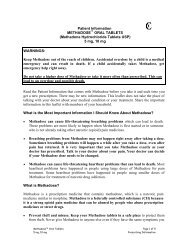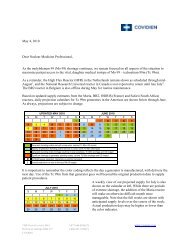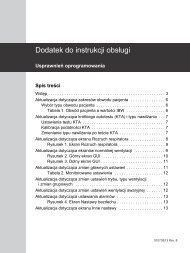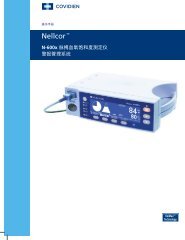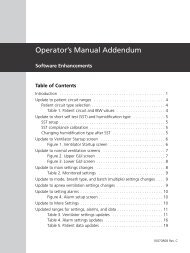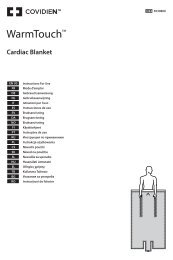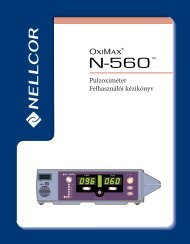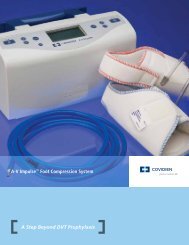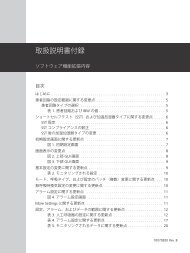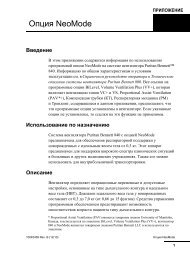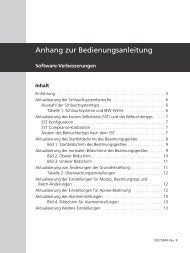Table of Contents - Covidien
Table of Contents - Covidien
Table of Contents - Covidien
You also want an ePaper? Increase the reach of your titles
YUMPU automatically turns print PDFs into web optimized ePapers that Google loves.
7.2 Alarm silence<br />
7-00086<br />
7-00423<br />
Alarm handling<br />
Silences the alarm sound for 2 minutes<br />
from the most recent key press. (The visual<br />
alarm indicators do not change.) If a new<br />
alarm occurs during the alarm silence<br />
period, the alarm sound resumes. If the<br />
condition that caused the initial alarm still<br />
exists after 2 minutes, the alarm sound<br />
resumes.<br />
NOTE:<br />
If the condition that caused a HIGH PRESSURE alarm persists, it<br />
cannot be silenced.<br />
During certain bedside procedures, you may want to silence new<br />
alarms. Pressing the alarm silence key when the ventilator is in a<br />
normal state prevents a new alarm from sounding for 2 minutes. If a<br />
new alarm occurs, the ALARM or CAUTION indicator flashes and its<br />
alarm message is displayed in the message window. New alarms that<br />
do not sound if an alarm silence is in effect are:<br />
• APNEA<br />
• DISCONNECT<br />
• HI EX TIDAL VOLUME<br />
• HI RESP RATE<br />
• HIGH PRESSURE (if circuit pressure is less than 90 cmH2O (90 hPa)<br />
• LO EX TIDAL VOLUME<br />
• LOW EX MINUTE VOLUME<br />
• LOW INSP PRESSURE<br />
• LOW RATE<br />
Warning<br />
For all bedside procedures, such as breathing circuit disconnection,<br />
<strong>Covidien</strong> recommends that you use the alarm silence key only<br />
when you plan to perform the procedure immediately.<br />
700 Series Ventilator Operator’s Manual 10066984 Rev. D 7-3


